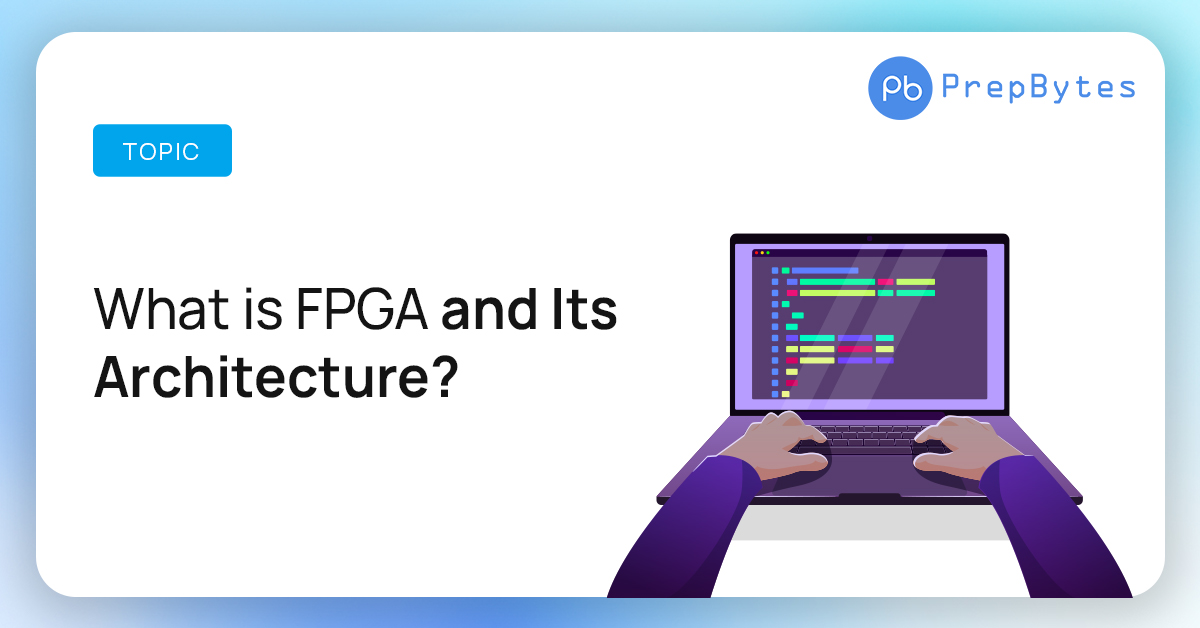In the world of digital electronics, Field-Programmable Gate Arrays (FPGAs) stand as a testament to the marvels of modern technology. FPGAs are reconfigurable integrated circuits that offer unparalleled flexibility and performance for a wide range of applications. Their unique architecture enables designers to create custom digital circuits tailored to specific tasks, making them an essential tool in industries like telecommunications, automotive, aerospace, and beyond. In this article, we delve into the world of FPGAs, exploring their architecture and the incredible potential they hold.
What is an FPGA?
A Field-Programmable Gate Array is essentially a blank canvas of digital logic that can be configured to perform complex functions. Unlike Application-Specific Integrated Circuits (ASICs) which are permanently configured during manufacturing, FPGAs can be programmed and reprogrammed after they leave the factory, allowing for flexibility and adaptability.
FPGA Architecture
At the heart of an FPGA’s power lies its unique architecture, which consists of three key components: configurable logic blocks (CLBs), programmable interconnects, and input/output blocks (IOBs).
1. Configurable Logic Blocks (CLBs): CLBs are the workhorses of an FPGA. These blocks consist of Look-Up Tables (LUTs), multiplexers, flip-flops, and other elements that can be configured to perform specific logic functions. LUTs, in particular, allow designers to implement custom digital logic, enabling FPGAs to mimic virtually any digital circuit.
2. Programmable Interconnects: Interconnects provide the pathways for signals to travel between different logic elements within the FPGA. These pathways are highly configurable, allowing designers to create intricate connections tailored to the application’s requirements. The interconnect structure is crucial in determining the speed and efficiency of signal propagation within the FPGA.
3. Input/Output Blocks (IOBs): IOBs serve as the bridge between the external world and the FPGA. They provide the necessary connections for input and output signals, enabling seamless communication between the FPGA and other components in a larger system. IOBs are designed to accommodate various signaling standards, making FPGAs adaptable to different interfacing needs.
Programming an FPGA
The reprogrammability of FPGAs is made possible through the use of a bitstream. A bitstream is a binary file that contains configuration information for the FPGA’s logic elements and interconnects. When a bitstream is loaded onto an FPGA, it configures the device to perform the desired functions. This capability allows designers to rapidly prototype and iterate designs, reducing time-to-market and development costs.
Applications and Advantages of FPGAs
FPGAs find application in a wide array of fields due to their versatility and high-performance capabilities. They are commonly used in signal processing, digital communications, cryptography, image and video processing, real-time control systems, and scientific computing. Their benefits include:
1. Speed and Parallelism: FPGAs can be designed to perform computations in parallel, making them ideal for tasks that require high-speed processing and real-time performance.
2. Low Latency: The direct hardware implementation of algorithms in FPGAs reduces processing latency, making them suitable for applications where timing is critical.
3. Customization: FPGAs offer a level of customization and adaptability unmatched by traditional processors, enabling tailored solutions for specific tasks.
4. Energy Efficiency: The ability to optimize circuits for specific functions allows FPGAs to achieve higher energy efficiency compared to general-purpose processors.
Conclusion
Field-Programmable Gate Arrays have revolutionized the way digital circuits are designed, offering a unique blend of flexibility, performance, and reconfigurability. Their architecture, consisting of configurable logic blocks, programmable interconnects, and input/output blocks, forms the foundation for their remarkable capabilities. With applications spanning from consumer electronics to cutting-edge scientific research, FPGAs continue to push the boundaries of innovation, unlocking new possibilities for digital design and engineering.
Frequently Asked Questions (FAQs)
Here are some of the frequently asked questions about FPGAs.
1. What is the primary building block of an FPGA’s architecture, and how does it contribute to the device’s functionality?
The primary building block of an FPGA’s architecture is the Configurable Logic Block (CLB). CLBs consist of Look-Up Tables (LUTs), multiplexers, and flip-flops, which can be configured to perform custom logic functions. LUTs allow users to define specific truth tables, while multiplexers facilitate signal routing and flip-flops enable the creation of sequential circuits.
2. How does the programmable interconnect network within an FPGA enhance its configurability?
The programmable interconnect network is a grid of routing resources that enable connections between various CLBs and other elements. It offers dynamic configurability, allowing users to define signal paths and establish connections as needed for their specific design. This flexibility enables the creation of complex and tailored digital circuits.
3. What role do Input/Output Blocks (IOBs) play in the FPGA architecture?
Input/Output Blocks (IOBs) serve as the interface between the FPGA and the external world. They consist of buffers, registers, and pins that facilitate the connection of input and output signals. IOBs can be configured to support different signaling standards, ensuring compatibility with a wide range of external devices.
4. How does the clock distribution network contribute to the proper functioning of an FPGA design?
The clock distribution network ensures that synchronized clock signals are delivered to various parts of the FPGA. This network is essential for maintaining timing integrity and ensuring that sequential logic circuits operate coherently. Proper clock distribution is crucial for preventing issues like skew and ensuring accurate signal timing.
5. What is the significance of Block RAM (BRAM) in FPGA architecture, and how is it used in designs?
Block RAM (BRAM) is a specialized memory resource within an FPGA. It provides fast and efficient storage for data and can be used for purposes such as data buffering, storage of coefficients for digital signal processing, and more. BRAM enhances the FPGA’s ability to handle data-intensive tasks efficiently and can significantly improve overall system performance.



